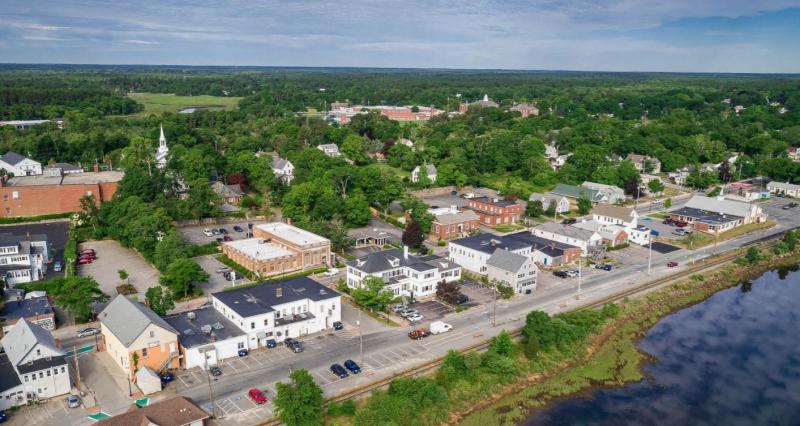Wareham could acquire downtown properties with urban renewal plan
Art galleries, restaurants and even light industry could move into Wareham Village under a preliminary urban renewal plan that was presented to the Planning Board and Redevelopment Authority on Sept. 30.
But to do that, said Emily Innes, a contracted consultant for the plan’s development, the Planning Board and Redevelopment Authority will need to acquire property along Main Street and work with developers to bring in new business.
Innes presented four locations that are candidates to be acquired by the town and redeveloped: A hairdresser and a bait shop at 137 and 149 Main St., the Cornwall Building at 195 and 203 Main St., a former dry cleaner at 247 Main St., and Sam’s Gas Station at 397 Main St.
This list of locations is not final, said Innes.
These locations, some of which are vacant, are candidates for acquisition by the town because of environmental contamination, non-responsive owners, or “potential significant and recurrent [economic] loss” to the town.
Towns with an approved urban renewal plan can acquire real estate through eminent domain, demolish or rehabilitate structures, and receive grants and loans.
She suggested that the town could demolish and clear the properties and recover the cost by selling the lots to developers.
Innes explained that when working with new developers, the town could present a “menu” that could outline the town’s development standards, design guidelines, and quality requirements.
A part of those guidelines would be listing what kind of businesses the town would like to see in the village.
Urban renewal has been on the town’s roadmap since 2021 when Wareham was awarded a $45,000 grant from the Community Compact Program, a state program that allows for initiatives like urban renewal to take place.
According to the state, an urban renewal plan is “a strategy for redeveloping and revitalizing substandard, decadent and blighted open areas for residential, commercial, industrial, business, governmental, recreational, educational, hospital or other uses.”
In September, Innes hosted a public meeting to discuss a survey that asked Wareham residents for their suggestions on new features they would like to see in Wareham Village which included rooftop dining, a boardwalk, more green space and public art.
Planning Board member Sherry Quirk suggested that art galleries would have a “nice synergy” with a thriving restaurant scene that is already finding a foothold in Wareham.
Innes noted that art galleries could also double as residential buildings, allowing artists to live above their studios.
Breweries or distilleries that could be zoned as “light industrial” buildings that manufacture and sell their own products might be a good addition as well, said Innes.
Planning Board member Sam Corbitt suggested lower tax rates for new developers under the urban renewal plan.
“When opening a business, the first day is the most critical, you gotta get it right,” said Corbitt. “And if you have some of the burden taken off of you, that could be a big help.”
Along with deciding what types of business and industry is the right fit for Wareham, the town also needs to reckon with the threat of rising sea levels that could put Main Street at risk of regular flooding in 30 years, said Innes.
A recent study conducted by the Trustees of Reservations, a non-profit organization that conserves nearly 27,000 acres of land across the state, found that by 2050, daily tidal flooding could impact 250 buildings in Wareham.
Innes recommended the town look into partnering with private businesses to help fight the effects of sea level rise by raising the height of buildings on the east side of Main Street, or installing man-made or natural barriers to keep flooding at bay.
But Wareham Village’s proximity to the water isn’t just a threat, it’s also a boon to foot-traffic, said Innes, who told the boards that pedestrian access to the waterfront is essential for a thriving downtown.
“If you’re going to make downtown a destination, the water’s edge is where it starts,” said Planning Board Chair Michael King.












